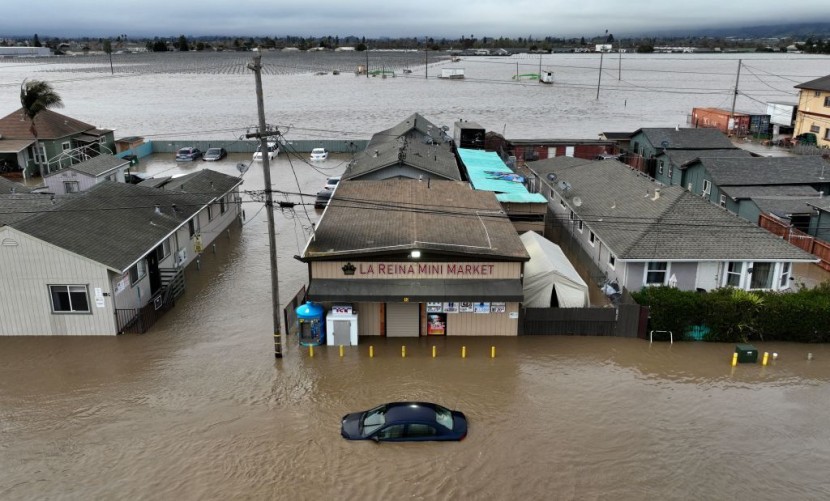
An "atmospheric river" storm pummeled the drenched state of California with more heavy rains on Friday, causing floods that wiped away roadways and forced evacuations in numerous counties.
The most recent downpour brought extra snow to higher altitudes as massive streams of Pacific rain swept over California's sky and saturated several mountain ranges already covered in snowdrifts left over from a previous round of crippling blizzards.
At least eight individuals, most of them elderly, perished alone in their houses during late-February snowstorms, according to the San Bernardino County Sheriff's Department, according to a Reuters report.
The town of Big Bear and the surrounding mountain enclaves were unprepared for the severe winter storms, which local officials have labeled unusual for Southern California's mountain area.
Greater Los Angeles, the San Francisco Bay Area, and metropolitan Sacramento were all hit hard by the latest round of heavy rainfall and strong winds on Thursday night and early Friday.
#ABC30Insider Brian Durke shares this footage of flooding waters hitting a house in the mountain community of Springville.
— ABC30 Fresno (@ABC30) March 10, 2023
Stay with Action News for continuing coverage of this atmospheric river. pic.twitter.com/aoq1yKhDkB
Thousands Evacuated, Without Electricity
San Diego from the Mexican border to the northern California Shasta-Cascade area was under flood warnings and advisories due to the atmospheric river.
As floodwater entered the system's wells, the local water department advised people not to consume or cook with tap water.
Over 9,000 people were still told to leave their homes battered by the exceptionally wet storms known as atmospheric rivers. This is the 1oth natural disaster to strike California this year, according to The Washington Post.
After around 55,000 people lost power Friday, roughly 32,000 were without power Saturday afternoon in California.
Read Also: Hamburg Shooting Update
Seizing the Opportunity To Refill California Groundwater
California Gov. Gavin Newsom has signed an executive order suspending permits required to replenish California's chronically depleted groundwater basins, meaning that this effort may begin as early as this spring.
After decades of agricultural pumping, state water administrators want local agencies and agricultural districts to gather water from freshly engorged rivers and disperse it across fields to soak into aquifers.
State law requires permission from the State Water Resources Control Board and the Department of Fish and Wildlife to withdraw water from the state's system of rivers and canals for groundwater recharge.
Although many local agencies were unable to send water underground due to the storms in January, this month's atmospheric rivers and almost record-breaking snowfall provide fresh chances.
According to Newsom's executive order, groundwater refill is no longer required to have a water rights permit provided certain environmental requirements are met from March 10 to June 1 on the land, The Sacramento Bee reported. In addition, this regulation removes the requirement for permission from the Florida Department of Fish and Wildlife to change the bottom of a lake or stream.
On average, groundwater provides about half of California's water, but in drought years, it may provide as much as 58 percent. The state's aquifers can store more than 850 million acre-feet of water, but they've been badly depleted due to decades of intensive agricultural pumping.
The Global Institute for Water Security at the University of Saskatchewan has reported that California groundwater depletion in the Central Valley since 2003 had amounted to around 36 million acre-feet.
Related Article: Joe Biden 6.8 Trillion Budget Proposal








